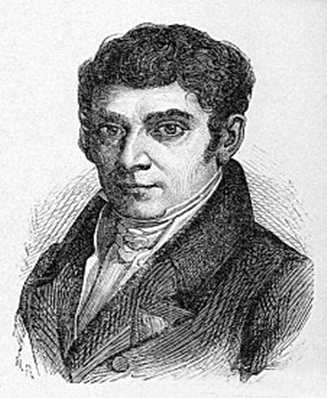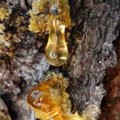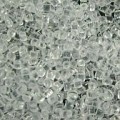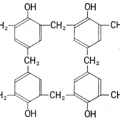
Henri Braconnot (May 29, 1780, Commercy, Meuse – January 15, 1855, Nancy )
| 1832 | Henri Braconnot | Nitrocellulose discovery | Such as starch and cotton is dissolved in warm to put in concentrated nitric acid, it was found a white powdery nitrocellulose of strength retardancy and wash. |
|---|---|---|---|
| 1835 | Justus von Liebig | Vinyl chloride powder discovery | Liebig discovered that can polymer,leave exposed the solid vinyl chloride in sunlight (polyvinyl chloride) is. It is said that the beginning of the synthetic resin of vinyl chloride powder has been found. |
| 1845 | Christian Friedrich Schonbein | Cellulose nitrate mass production | To develop the industrial process to process the cotton in the mixed acid of nitric acid and sulfuric acid, and succeeded in mass production of cellulose nitrate, application as gunpowder began. |
| 1851 | Nelson Goodyear | Ebonite development | Develop ebonite to (patent us8075), it has been commercialized by Charles Goodyear, and the like. |
| 1856 | Alexander Parkes | Celluloid invention | ParkesIt invented the ivory artificial that the cellulose as a raw material (trademark in the first synthetic resin Parkesine), and drew attention in exhibition in London Expo of 1862. This was a resin called under the trade name of celluloid. |
| 1868 | John Wesley Hyatt | Celluloid invention | Celluloid invention (cellulose nitrate) is (us50359: 1865, us88633: 1869) has closed, but the first is not too hard, and is used for a film for a photographic, it becomes possible to harden it by adding a camphor, was Mashi Nisato so that it can make a pool of balls alternative of ivory. |
| 1872 | Adolf von Baeyer | Pphenolic resin discovery | Baeyer found a phenol resin, which can by the reaction of phenol and formalin. |
| 1884 | Hölzer | Urea resin invention | Urea resin was first synthesized in 1884 by Hölzer, who was working with Bernhard Tollens. In 1919, Hanns John (1891–1942) of Prague, Czechoslovakia obtained the first patent for urea-formaldehyde resin. |
| 1898 | Hans von Pechmann | Polyethylene discovery | Diazomethane have thermal decomposition discovered by chance a waxy substance, after Eugen Bamberger and Friedrich Tschirner. Make sure that it is a polyethylene (low density polyethylene). |
| 1899 | Arthur Smith | Production method of Ebonite | Method for manufacturing the UK patent on solid phenolic resin (ebonite ebonite) and (Britain patent 16274 phenol-aldehyde regins) getting a US patent (us643012). |
| 1907 | Leo Hendrik Baekeland | Bakelite invention | Paper on the back incorporated bleeding a phenolic resin in pulp, heating, invented the pressurized and compacted Bakelite , Germany patent: I applied for a (1908 DRP 233803). US patent (us942,809: 1909/11/7, app1909 / 9/17) |
| 1909 | Leo Hendrik Baekeland | Bakelite industrialization | The successful industrialization of Bakelite (Baekelite trade name), it is said that the first issue of a full-fledged synthetic resin not the flora and fauna as a raw material. |
| 1912 | Jacques Edwin Brandenberger | Cellophane recipe invention | Made from wood cellulose, cellophane was intended as a coating to make cloth more resistant to staining. After several years of further research and refinements he began production of cellophane in 1920 marketing it for industrial purposes. He sold the US rights to DuPont Inc. in 1923. |
| 1909 | Fritz Hofmann | Polymerization of isoprene | Research group of Hoffman succeeded in polymerization of isoprene, with it, the first synthetic rubber is made. |
| 1910 | Sergei Vasiljevich Lebedev | Butadiene synthesis | Butadiene is synthesized, the first of the rubber polymer is produced. |
| 1914 | Fritz Klatte | Polyvinyl chloride synthesis method development | The Griesheim electronic chemical plant (firm of Chemische Fabrik Griesheim-Elektron Germany) will apply the developed patent (us1241738) a method of synthesizing polyvinyl chloride, I tried to commercialize polyvinyl chloride, and brittle that it is hard We gave up from. |
| 1926 | Waldo Lonsbury Semon | Polyvinyl chloride commercialization | BF Goodrich Company is succeeded in the flexible and workable materials polyvinyl chloride by mixing various additives. The successful commercialization of polyvinyl chloride, it became the beginning of the chemical industry. |
| 1927 | DuPont Inc. | Nylon development | Launched a top secret research and development team, we have developed fibers, such as silk, and ultimately with the goal of making the silk stockings, and developed a nylon artificial fiber pouring $ 27 million for the subsequent 12 years I did. |
| 1928 | Rohm & Haas Inc. | Acrylic resin invention | (US) Rohm & Haas Co., Ltd.: acrylic resin glass development |
| 1928 | Waldo Lonsbury Semon | Patent of polyvinyl chloride | The filed patent of polyvinyl chloride (us1929453, us2188396), to get, we have succeeded in commercializing such as a sheet of polyvinyl chloride, practical use of polyvinyl chloride began. |
| 1930 | I.G. Farben(BASF AG) | Polystyrene industrialization | |
| 1930 | P. CastanS.O. Green: | Epoxy resin synthesis | |
| 1931 | Groupe W.H. Carothers (DuPont Inc..) | Nylon named Fiber-66 “ | Focusing on GJ Berchet, synthesized with the melt spinning and drawing the success of the polyamide from hexamethylene diamine and adipic acid, named “Fiber-66”, is the basis of nylon development |
| 1933 | ICI (Imperial Chemical Industrial Limited) | Polyethylene synthetic method discovery | British company ICI (Imperial Chemical Industrial Limited) but synthesis method to make polyethylene and ethylene in high temperature and high pressure by ICI has been discovered, but was not difficult commercialization is to reproduce the experiment, the Second World WarIt has been put to practical use in the UK in, from the fact that electrical properties were excellent, it seems to be used for the insulation of the radar cable. |
| 1935 | I.G. Farben, Henkel AG, CibaAG(Novartis AG) | Melamine resin production start | |
| 1936 | Carbon Carbide & Chemicals, Inc. | Copolymer fiber manufacturing technology patent application of vinyl chloride and vinyl acetate (established in 1939), named “Vinyon” | |
| 1938 | R.J. Plunkett (DuPont Inc.) | Polytetrafluoroethylene (“Teflon” after) invention | |
| 1939 | DuPont Inc. | Artificial fiber “product name nylon” of polyamide (PA) has been collected by the exhibitors focused on Nyuyoku Expo. | |
| 1949 | ICI, Co., Ltd | Polyethylene terephthalate (PET) development | |
| 1950 | DuPont Inc. | Polytetrafluoroethylene (PEFE) development | |
| 1958 | Bayer AG, IGE nc. | Each own polycarbonate (PC) development | |
| 1956 | DuPont Inc. | Polyacetal (polyoxymethylene) (POM), the product name “Delrin” development | |
| 1960 | Celanese Corp. | Acetal copolymer (PC) product name “Cercon Celcon®”, product name “DURACON DURACON” development in Japan | |
| 1964 | DuPont Inc. | Film “product name Kapton” development of polyimide (PI) | |
| 1965 | GE, Inc. | Polyphenylene ether (PPE) development | |
| 1965 | UCC Inc. | Polysulfone (PSF) development | |
| 1965 | GE, Inc. | Modified polyphenylene ether (m-PPE) development | |
| 1968 | Koninklijke Philips N.V. | Polyphenylene sulfide (PPS) development | |
| 1970 | Celanese Corp. | Polybutylene terephthalate (PBT) development | |
| 1971 | Amoco Inc. | Polyamide-imide (PAI) development | |
| 1972 | Carborundum Co. | Polyarylate (LCP) development | |
| 1972 | ICI, Inc. | Polyether sulfone (PES) development | |
| 1973 | Unitika Co. | Amorphous polyarylate (PAR) development | |
| 1980 | ICI, Inc. | Polyether ether ketone (PEEK) Development | |
| 1981 | GE, Inc. | Polyetherimide (PEI) development | |
| 1984 | Datoco Co., Ltd | The liquid crystal polyester (LCP) development |
 HEAT-TECH Best Technology Online Shop
HEAT-TECH Best Technology Online Shop 










